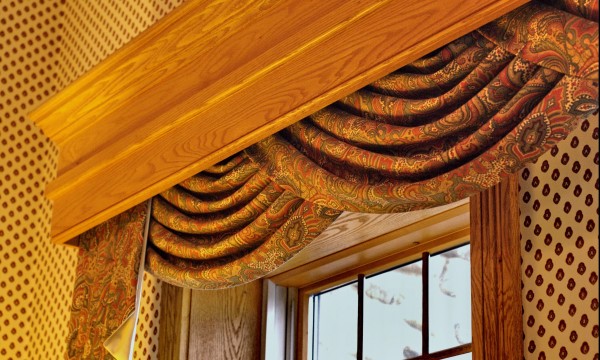Though they serve the same purpose, curtain rods and curtain tracks couldn't be more different in style. Where rods are conspicuous and often decorative, tracks are designed to be practically invisible. Here's a list of pros and cons to help you choose the best system for hanging your curtains.
- Browse Categories
- All Tips
-
Home & Garden
- All
- Appliances
- Bathroom
- Cleaning
- Crafts
- Decorating
- Electrical
- Flooring
- Furniture
- Garage Door
- Gardening
- Green Living
- Heating
- Home Alarm Systems
- Home Maintenance
- Home Remedies
- Home Security
- Home Staging
- House Sitting
- Junk Removal
- Kitchen
- Lawn Care
- Lock Systems
- Moving
- Outdoor Living
- Pest Control
- Plumbing
- Renovation
- Roofing
- Snow Removal
- Storage
- Tools
- Tree Service
- Health
- Family
- Travel
- Auto
- More Tips
Your account is now active!

Curtain rods or curtain tracks: pros and cons
August 28, 2015

Curtain rods
- Commonly made of wood, metal or plastic, curtain rods are usually exposed to view and are often seen as decorative features in their own right, complementing the curtains they hold up. To top them off, ornamental end-stops, called finials, stop the curtain from sliding off the rods.
- Rods are most effective across a short distance such as a recess, a single window or a short, straight run of windows.
- Longer rods require more supporting brackets which can interfere with the running of the curtain.
- There is almost always a gap between the rod and the top edge of the curtain, and this gap can be the entry point for unwanted light. For that reason, rods must be set at a significant height above the window.
- If you're fitting a curtain into a bay window, you can either source a metal curtain rod bent to the appropriate shape or ask your supplier to put together a combination of rods and angled connector joints to achieve the required shape.
- For lightweight curtains or curtains running across short distances, slim rods measuring less than 2.5 centimetres (1 inch) in diameter are appropriate. Heavyweight curtains and curtains running across longer distances are best hung on thicker rods.
Curtain tracks
- Curtain tracks are designed to blend against the wall or be concealed behind a curtain, pelmet or valance, curtain tracks are meant to be discreet. They're commonly available in PVC and metal.
- Most PVC and metal tracks can be bent to shape for installation in bay windows and other unusual window arrangements. Remember that curtains will run more smoothly over gentle bends than abrupt ones.
- The track must be strong enough to hold the weight of the curtain fabric. Refer to the load rating printed on the packaging of your curtain track, or ask your supplier for advice.
- A cord attached to pulleys and gears open and close corded tracks. These sorts of tracks are particularly useful for curtains on very tall windows or for those made of heavyweight fabric, both of which can drag or jam when pulled by hand. Corded tracks are also ideal when the curtain is made from a delicate fabric. The curtains on uncorded tracks are very simply pulled back by hand.
- Expandable tracks are a good product if you're planning to do your own installation work. As the name suggests, expandable tracks have moving parts that slide to make the track longer or shorter to match the size you require.
National advertising powered by Mediative.com. Yellow PagesTM, Walking Fingers & DesignTM, YP.caTM, Find. & DesignTM, YellowPages.caTM, Canada411TM and YP ShopwiseTM are trademarks of Yellow Pages Digital & Media Solutions Limited in Canada. All other trademarks are the property of their respective owners. Copyright © 2018 Yellow Pages Digital & Media Solutions Limited. All Rights Reserved.
More Tips
The material on this website is provided for entertainment, informational and educational purposes only and should never act as a substitute to the advice of an applicable professional. Use of this website is subject to our terms of use and privacy policy.






